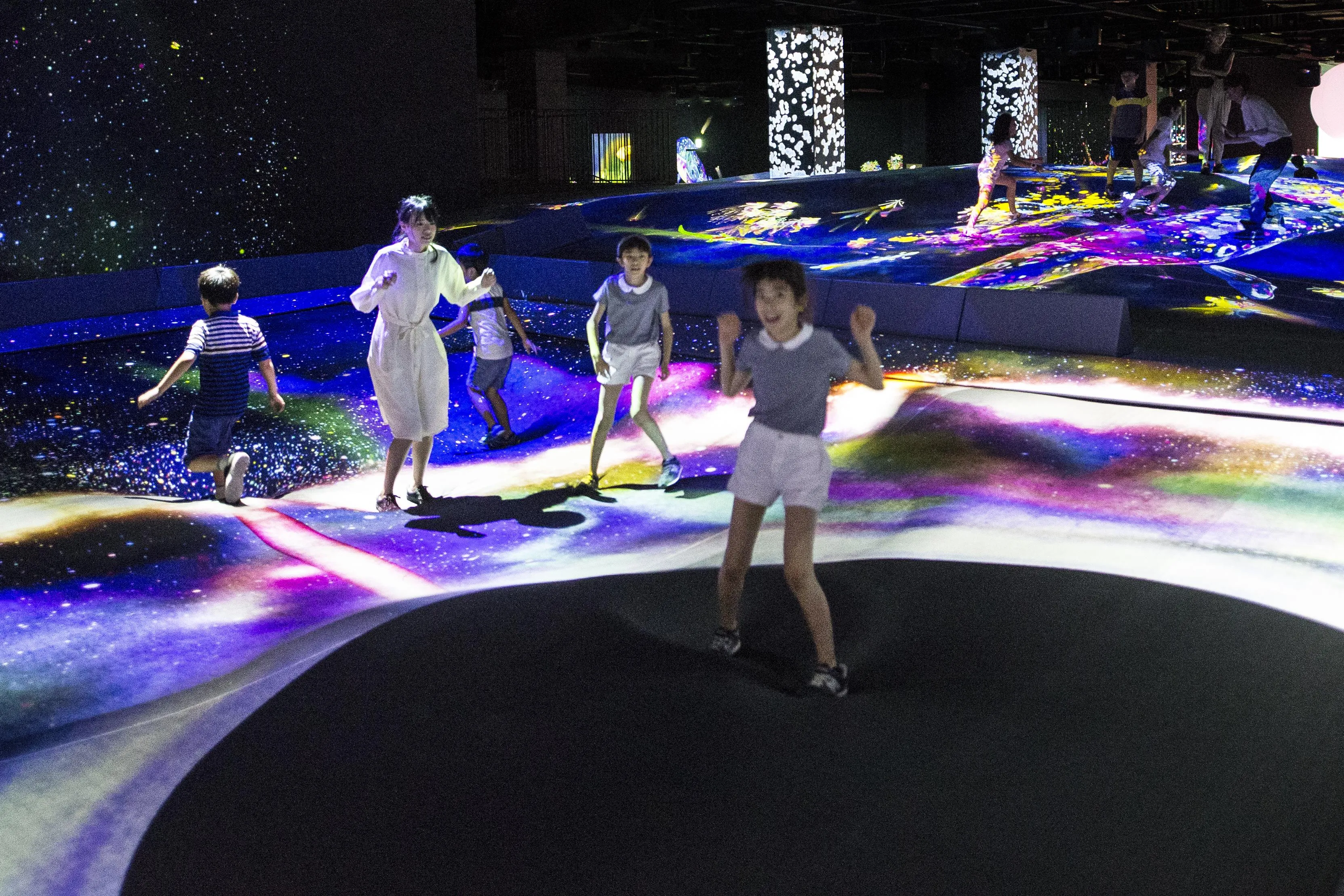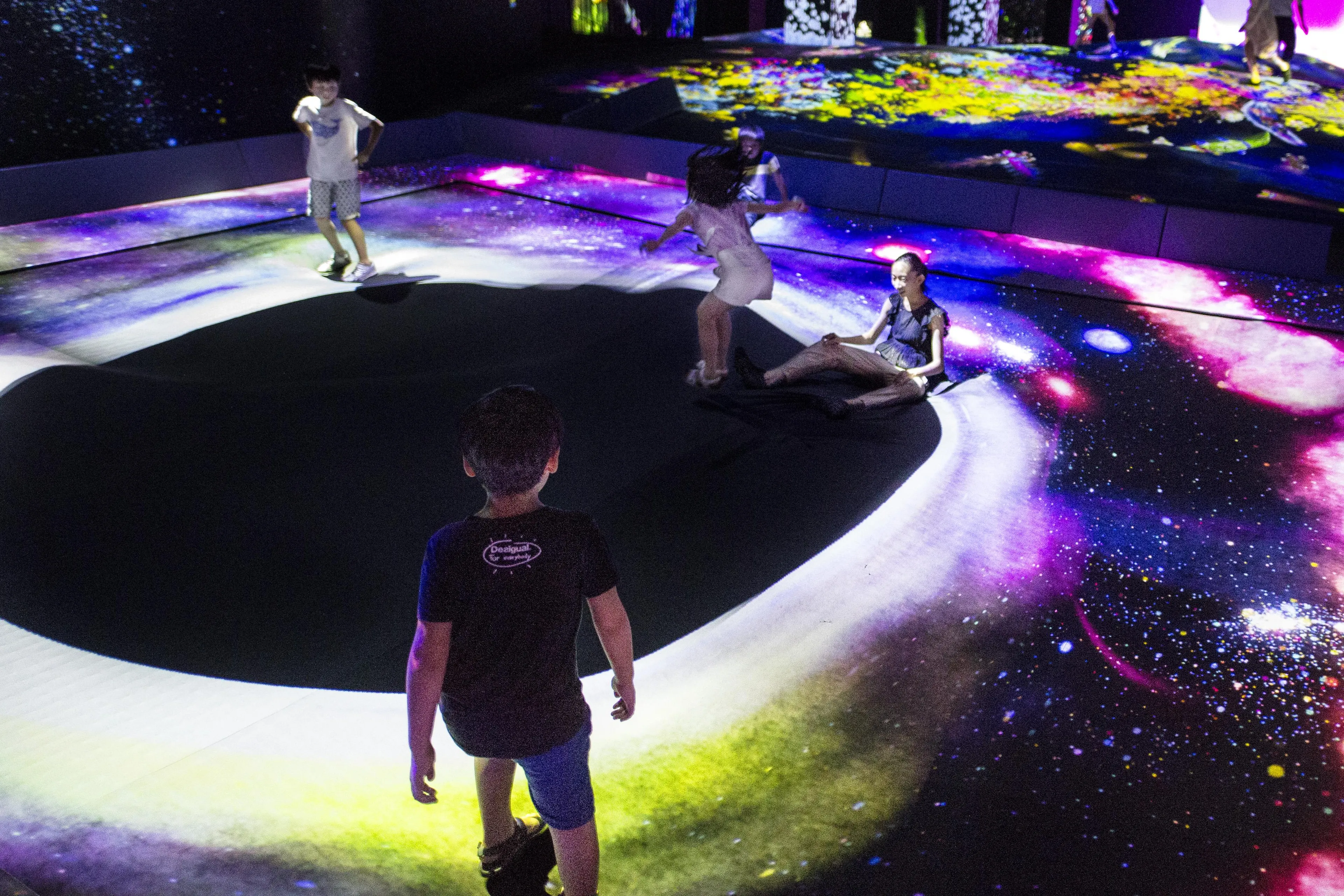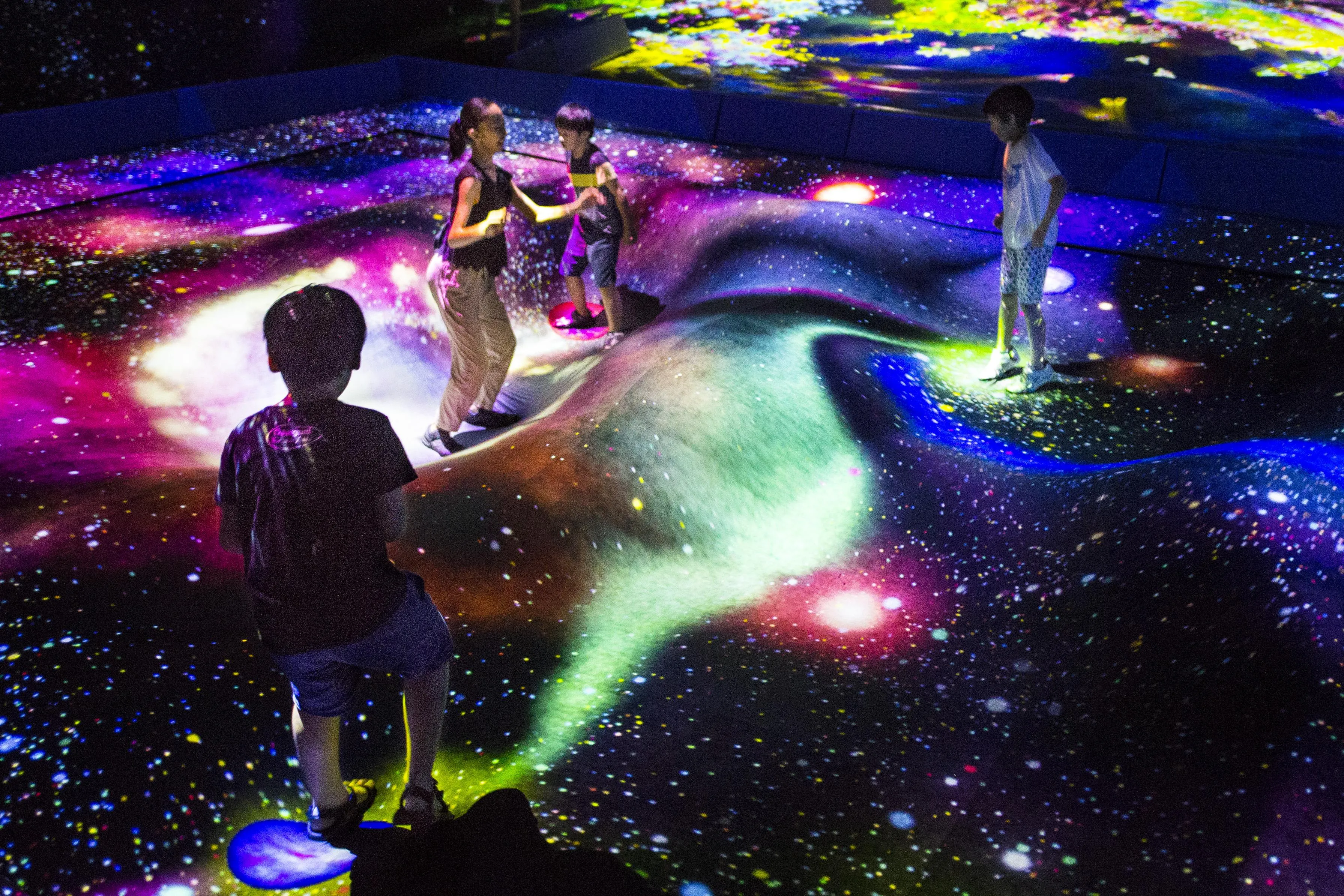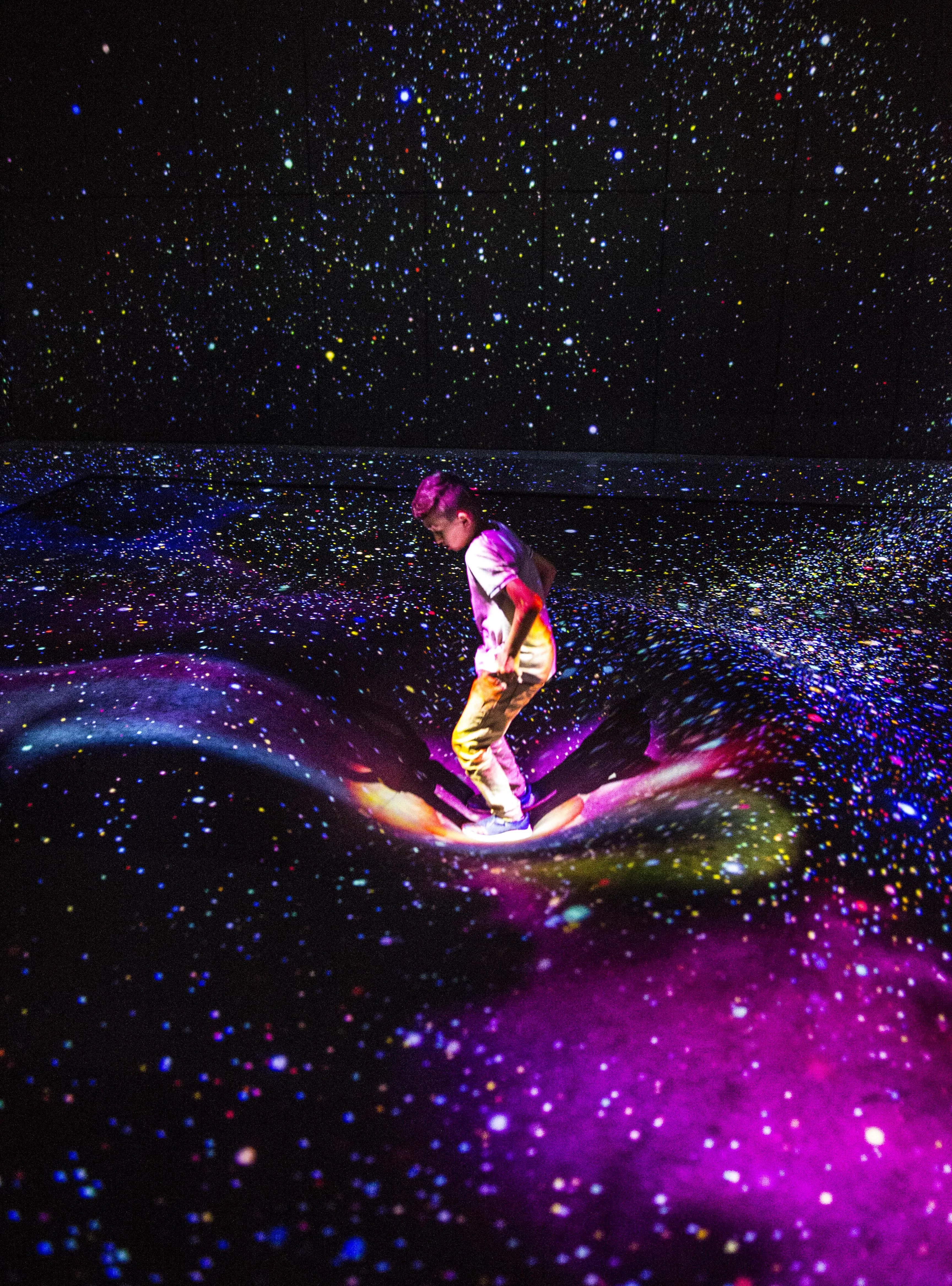Multi Jumping Universe
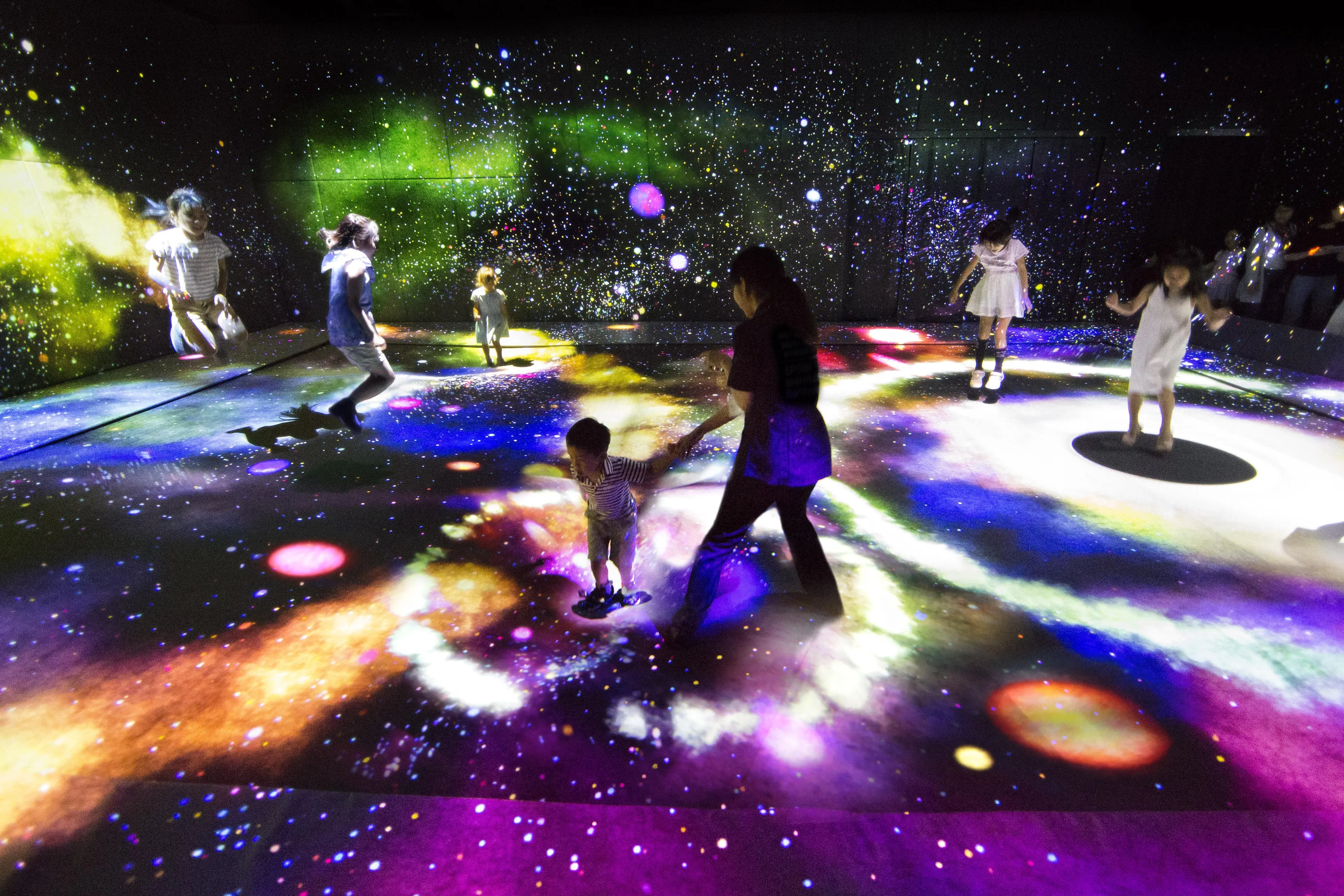

Multi Jumping Universe
Boing Boing Universe is a space where a unique flexible surface developed by teamLab is stretched across the room. You sink, or jump higher than usual, or leapfrog over people nearby as they jump higher and higher.
This installation is created around the theme of the life cycle of the stars of the universe. In this space, people create a warp in space and time. This distortion will attract stardust and gas from the universe, birthing new stars, and making them grow. When the life of the star ends, it will return to the stardust and nebulas that float through the universe, becoming the building blocks of new stars. The size and mass of the star is determined by how much stardust and gases are gathered. A gigantic and heavy star will eventually becomes a black hole that swallows up everything around them.
Contesto dell’opera
Lifecycle of a Star
Like the sun and the twinkling stars in the night sky, stars which generate their own light are called “fixed stars”. There are various types of stars in the universe; “planets” like the Earth we live on, and “natural satellites” such as moons which revolve around them, but here we are going to talk about the “fixed stars”.
A large factor in the life of a fixed star is “gravity.” According to Einstein’s theory, in space, objects with mass cause a distortion in space-time. The force that causes surrounding objects to be pulled toward this distortion in space-time is called “gravity.”
Birth of a Star
Evolution of a Star
Death and Rebirth of a Star


